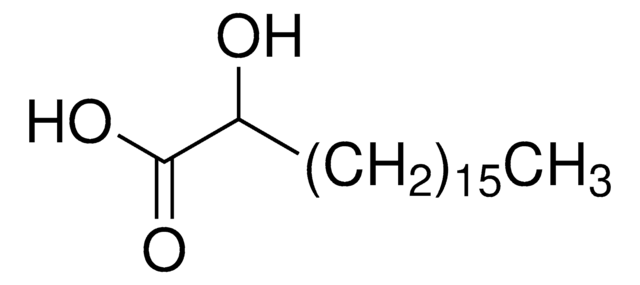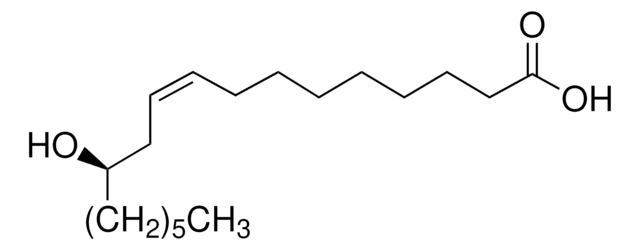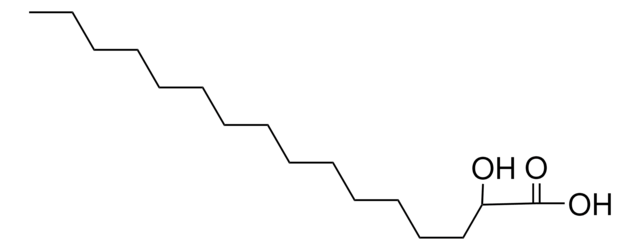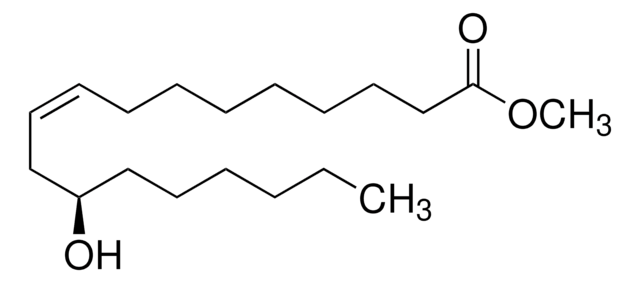Wichtige Dokumente
SML0256
2OHOA
≥98% (HPLC)
Synonym(e):
(9Z)-2-Hydroxy-9-octadecenoic acid; cis-2-Hydroxy-9-octadecenoic acid, 2-Hydroxy Oleic Acid, Minerval
About This Item
Empfohlene Produkte
Assay
≥98% (HPLC)
Lagerbedingungen
protect from light
Farbe
white to tan
Löslichkeit
DMSO: >20 mg/mL
Lagertemp.
room temp
SMILES String
CCCCCCCC\C=C/CCCCCCC(O)C(O)=O
InChI
1S/C18H34O3/c1-2-3-4-5-6-7-8-9-10-11-12-13-14-15-16-17(19)18(20)21/h9-10,17,19H,2-8,11-16H2,1H3,(H,20,21)/b10-9-
InChIKey
JBSOOFITVPOOSY-KTKRTIGZSA-N
Anwendung
- a modulator of the sphingolipid and glycerophospholipid pathway to study its effects on myelination in mice Charcot–Marie–Tooth type 1A (CMT1A) myelinopathy and myelinating dorsal root ganglia cultures
- in biophysical studies to study its effects on artificial membranes
- to study its interactions with major membrane lipid films
Biochem./physiol. Wirkung
Signalwort
Danger
H-Sätze
P-Sätze
Gefahreneinstufungen
Eye Dam. 1
Lagerklassenschlüssel
11 - Combustible Solids
WGK
WGK 3
Flammpunkt (°F)
Not applicable
Flammpunkt (°C)
Not applicable
Hier finden Sie alle aktuellen Versionen:
Analysenzertifikate (COA)
Die passende Version wird nicht angezeigt?
Wenn Sie eine bestimmte Version benötigen, können Sie anhand der Lot- oder Chargennummer nach einem spezifischen Zertifikat suchen.
Besitzen Sie dieses Produkt bereits?
In der Dokumentenbibliothek finden Sie die Dokumentation zu den Produkten, die Sie kürzlich erworben haben.
Kunden haben sich ebenfalls angesehen
Unser Team von Wissenschaftlern verfügt über Erfahrung in allen Forschungsbereichen einschließlich Life Science, Materialwissenschaften, chemischer Synthese, Chromatographie, Analytik und vielen mehr..
Setzen Sie sich mit dem technischen Dienst in Verbindung.













